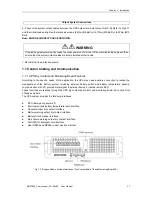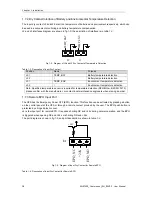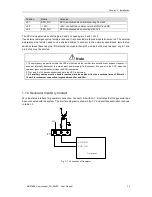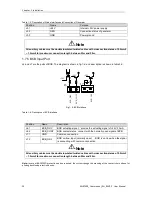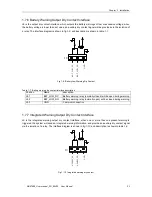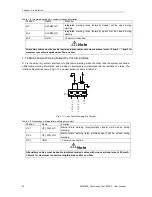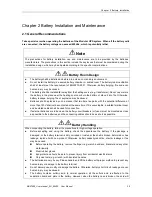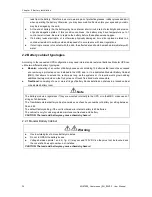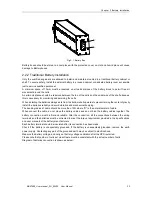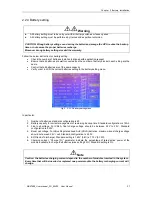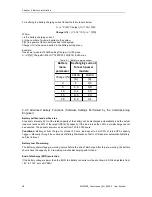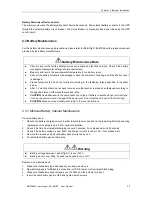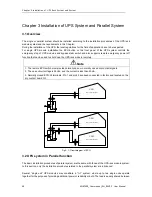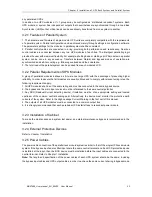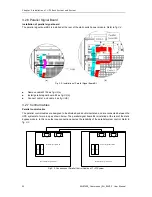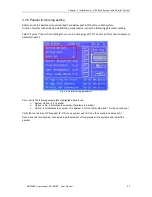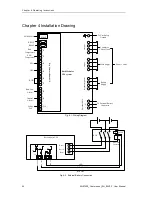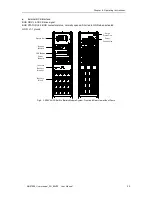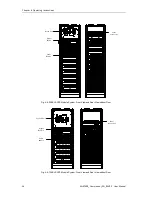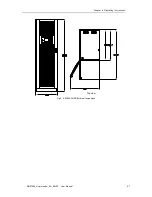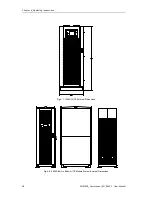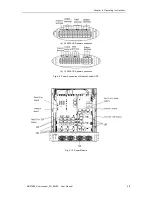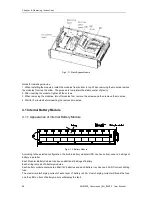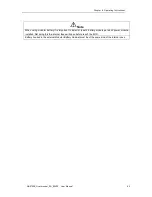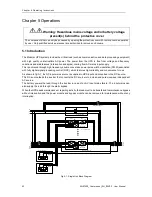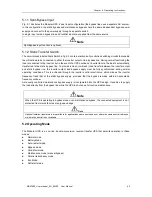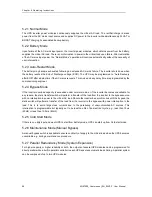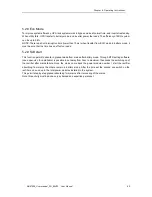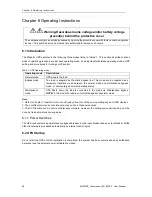
Chapter 3 Installation of UPS Rack System and Parallel System
MUST400_User manual_EN_REV02 User Manual
31
any paralleled UPSs.
In addition, two UPS modules or 1+1 groups may be configured as “distributed redundant” systems. Each
UPS module or system has independent outputs that nevertheless are synchronized through a Load Bus
Synchronizer (LBS) so that critical loads can be seamlessly transferred from one system to another.
3.2.1 Features of Parallel System
1. The hardware and firmware of single module UPS units are completely compatible with the requirements
of a parallel system. Parallel configuration can be achieved merely through settings in configuration software.
The parameters settings for the modules in parallel system shall be consistent.
2. Parallel control cables are connected in a ring, providing both performance and redundancy. Dual-bus
control cables are connected between any two UPS modules of each bus. The intelligent paralleling logic
provides the user with maximum flexibility. For example, shutting down or starting up UPS modules in a parallel
system can be done in any sequence. Transfers between Normal and Bypass modes of operation are
synchronized and self
–
recovering e.g. following overloads and their clearance.
3. The total load of the parallel system can be queried from each module’s LCD.
3.2.2 Parallel Requirements of UPS Modules
A group of paralleled modules behave as if it were one large UPS with the advantage of presenting higher
reliability. In order to assure that all modules are equally utilized and to comply with relevant wiring rules, the
following requirements apply:
1. All UPS modules shall be of the same rating and must be connected to the same bypass source.
2. The bypass and the main input sources must be referenced to the same neutral potential.
3. Any RCD (Residual Current detecting device), if installed, must be of an appropriate setting and located
upstream of the common neutral bonding point. Alternatively, the device must monitor the protective earth
currents of the system. Refer to the High Leakage Current Warning in the first part of this manual.
4. The outputs of all UPS modules must be connected to a common output bus.
5. It is strongly recommended that each paralleled UPS install at least a redundant power module
3.2.3 Installation of Cabinet
To make the maintenance and system test easier, an external maintenance bypass is recommended in the
installation
.
3.2.4 External Protective Devices
Refer to Chapter 1 Installation
3.2.5 Power Cables
The power cable connection of the parallel rack module system is similar to that of the single UPS rack module
system. If the bypass input and rectifier input share the same neutral terminal and if an RCD protective device
is installed at the input, then the RCD device must be installed before the input cables are connected to the
neutral terminal. Refer to Chapter 1 Installation.
Note: The length and specification of the power cables of each UPS system should be the same, including
the bypass input cables and UPS output cables, in order to achieve the same current sharing in bypass mode.

